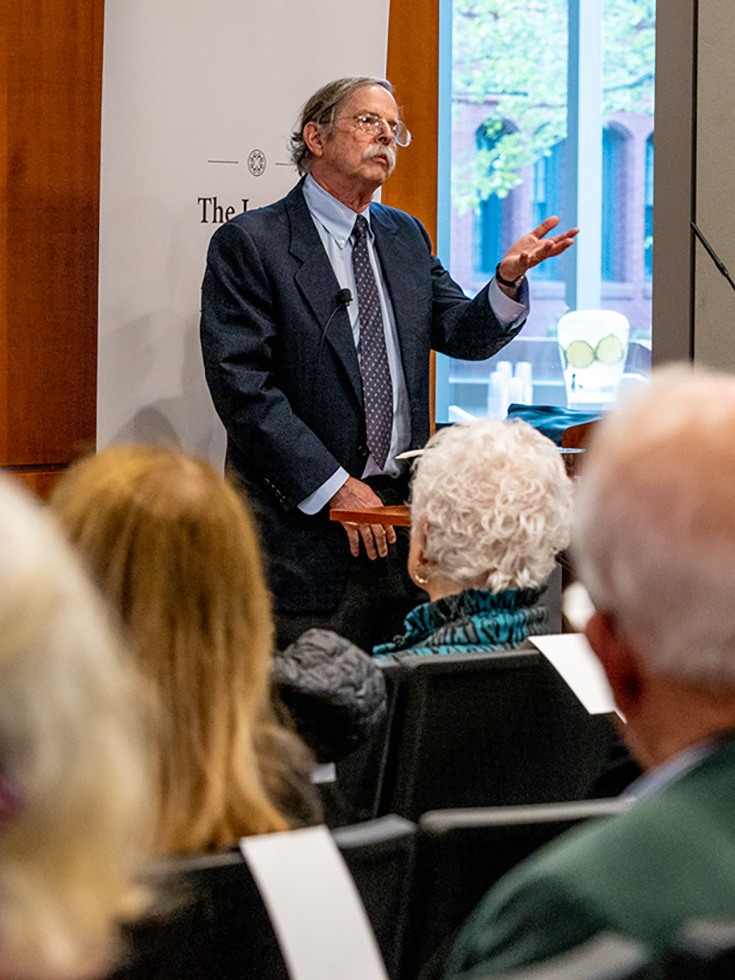PROVIDENCE, R.I. [Brown University] — In 1973, classes for Brown University’s newly formed medical school were held in the basement of the Biomedical Center, behind an imposing, windowless metal door — not the most welcoming or comfortable of environments. But for Arthur Horwich, a member of that inaugural cohort of aspiring physicians, there was nowhere else he’d rather be.
“We would go through that door every day and receive incredible lectures,” Horwich said. “The basic science faculty and clinical experts from the hospitals brought real medical physiology in the form of problems and patients and really gave us their all.”
“Problems and patients” aptly describes factors that have motivated Horwich ever since. He is a pediatrician and geneticist whose desire to apply clinical science to children’s health has led to groundbreaking discoveries that may one day influence treatment of diseases including Alzheimer’s, Parkinson’s and ALS.
In a return visit to Brown on Wednesday, May 3, Horwich traced his educational path in parallel with the intellectual path that led him to the discoveries for which he is known. He spoke in a room packed with scientists in the Sidney E. Frank Hall for Life Sciences as part of the Lemley Family Leadership Lecture Series, which brings accomplished leaders from a range of fields to campus to engage and inspire the University community.
This semester’s Lemley Lecture was offered in partnership with the Warren Alpert Medical School as part of a celebration of Brown’s 50 years of impact in medical education and research, the contributions of alumni and faculty in Rhode Island and around the world, and the school’s promising future ahead.
Looking back at his 50-year journey from medical school, Horwich shared a range of insights.
“You have to work on something that captures you… and not be afraid to make changes of direction to be doing something you really want to do,” said Horwich, who is a professor of genetics and pediatrics at the Yale School of Medicine.
Horwich is captivated by both basic science and medicine, and has practiced and taught both since graduating from Brown in 1975 as the first valedictorian of the first class of medical students. He has also shifted directions over time, folding and unfolding like the cellular proteins he’s devoted his life to understanding.
Horwich came to Brown in the fall of 1969 and enrolled in the school’s master of medical sciences program. He credits his burgeoning interest in biochemistry to Michael Czech, then a post-doctoral student, now the chair of medical research in the program in molecular medicine at the University of Massachusetts Chan Medical School. Horwich joined Czech in the lab of Brown professor John Fain, where they “burned the candle at both ends” studying the metabolic aspects of brown fat thermogenesis.
“Mike is the guy who hooked me on science,” Horwich said. “He taught me how to think scientifically. He was willing to take the time to really train somebody.”
To Horwich, basic science was tons of fun — he couldn’t get enough of “the day-to-day evolution of understanding the systems, the one-on-one discussions, the hands-on experiments.” When biochemist Christian Anfinsen won the 1972 Nobel Prize in chemistry for research into the properties of enzymes, Horwich, Czech and other classmates spent weeks discussing the research and conceptualizing experiments of their own.
Yet Horwich continued to pursue clinical training through Brown, savoring all of the hospital rotations but leaning increasingly towards pediatric training.
“It was a joyful experience taking care of kids and families,” Horwich said. “Particularly at that point in history where there were a lot of bacterial diseases that were knocking kids out — that were treatable if you recognized the condition early enough and treated it with antibiotics, you saved a child’s life.”
After graduating in 1975, Horwich found himself preoccupied with basic science, so he decided to engage in post-doctoral studies at the Salk Institute.
